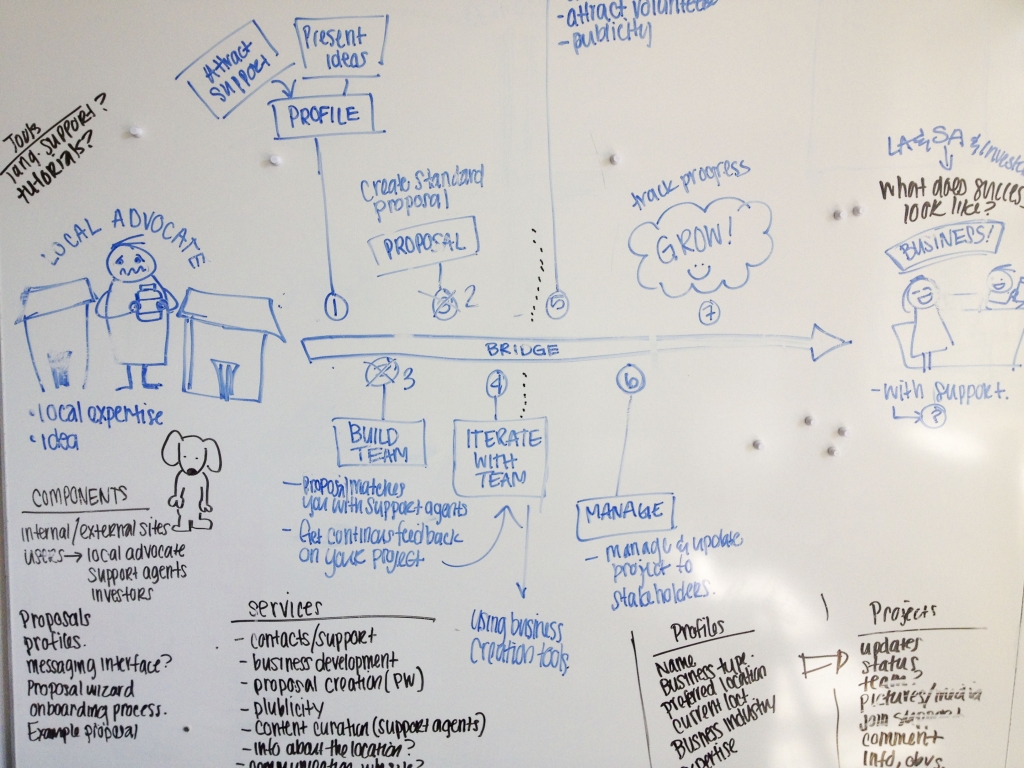Communication strategy as design
Rough as this semester is, I had a really heartening experience today helping a CMU startup with their communication strategy that affirmed several of my beliefs on the impact of design and my process:
- You need to spend time understanding the problem—the whole system—to the best of your abilities.
- Written communication is design and is part of the experience of an audience’s understanding your service.
- The team is not your audience, test your ideas with outsiders.
I am working on their overall design strategy and user experience throughout their serivce system and will be studying the interaction design on one specific chunk of the product throughout the semester. I told them my first step really understanding their product/service. They are so involved and wanted so much to explain the entire system to me that it really took some time to separate all the information they were giving me and think about it as a designer and a user. To think about the core values their service was providing to their intended users and how to communication and refine those areas. I spent a long time meeting with the team listening to their conversation and really challenging different areas of the service until I felt confident I could communicate it with conviction—that means not just understanding in it, but believing in what they were doing.

Notes I took to illustrate my understanding of the process and general notes on what I needed. This mess is how I think about things.